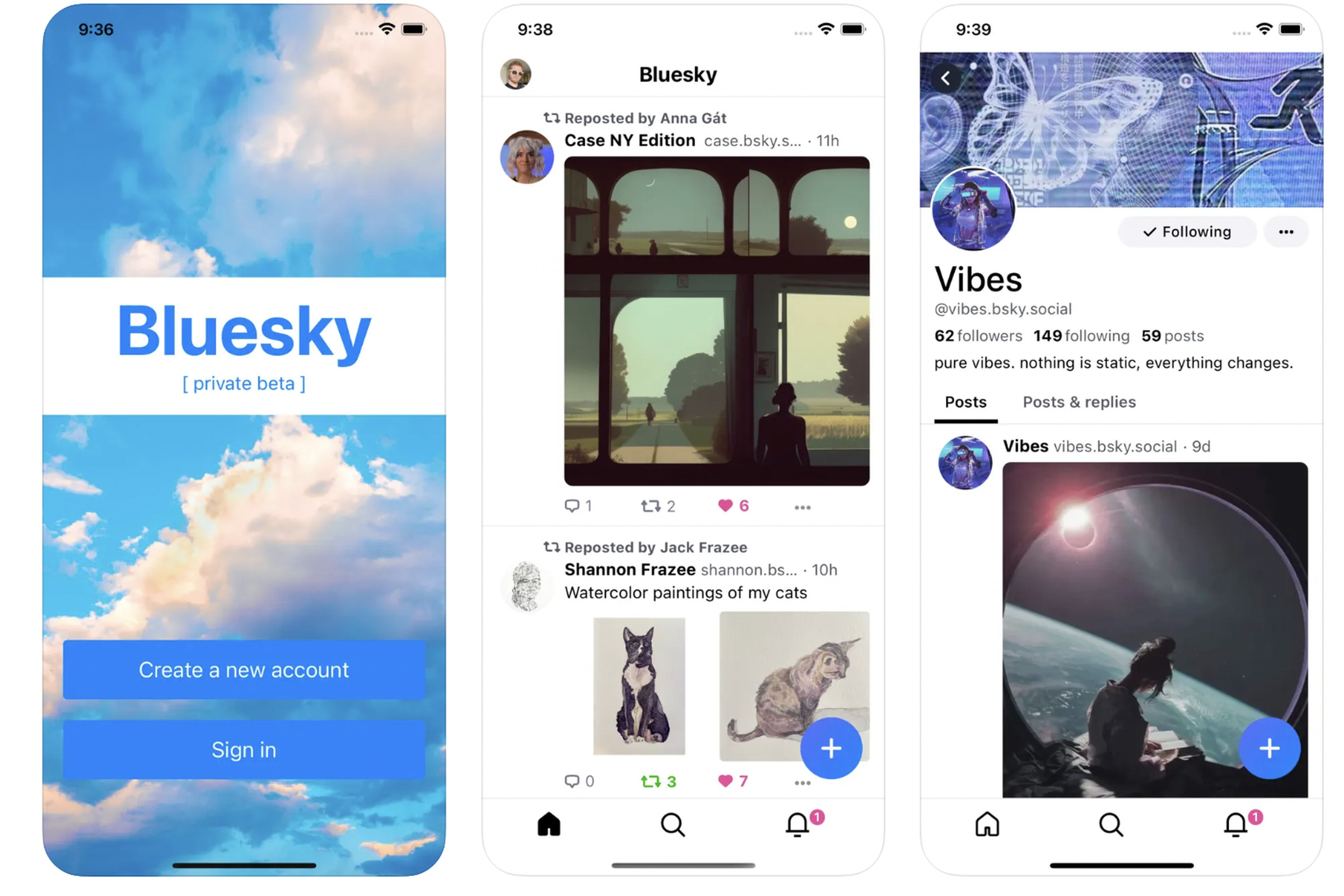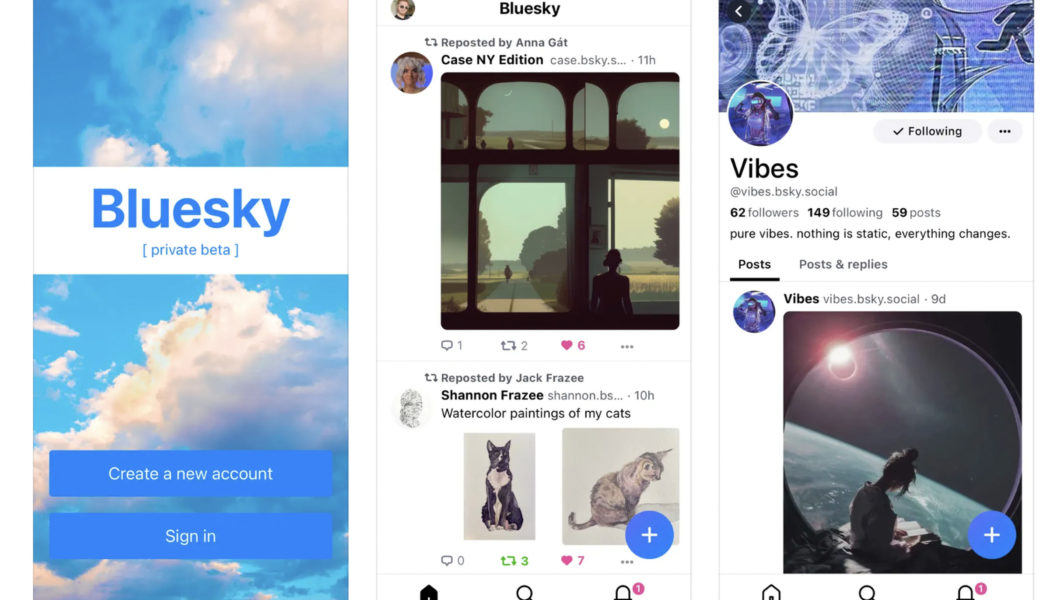Right now, the small community is delightful to be a part of. And thanks to the AT Protocol, the service has a promising future.

Bluesky is really, really fun.
Yes, the platform is essentially just Twitter but decentralized. And yes, the Jack Dorsey-backed Bluesky is one of many services emulating how Twitter looks right now. But after spending a few hours in Bluesky since getting my beta invite this week, it’s so far the service where I feel the most joy.
Similar to Mastodon, Bluesky is a federated social network, which, at its most basic level, means that users can participate through different providers instead of a huge central one. The easiest comparison is email: if you have Gmail, you can send an email to somebody on Apple’s iCloud, and they can reply back to you.
Bluesky lets you pick from different hosting providers. When I joined the app on Tuesday, I picked the default, which is Bluesky’s own system. (There’s an option to join other providers, but I don’t know what options are available or how to set them up. This may be user error or ignorance.) From there, I set my username, which reads more like a domain — jaypeters.bsky.social — and I’ll talk about that a bit more later.
When I first got to the “Following” feed, it was empty, but as I explored more, it didn’t take long to discover that Bluesky already has an extremely active user base that’s now dealing with an influx of newbies like me. Very soon in my Bluesky journey, I stumbled upon a post from Jay Graber, the CEO of Bluesky, that helped me get a sense of what I was in for.
“It was getting pretty scene-y here so we just emailed 5K people from our waitlist, say hi when you see them trickle on!” Graber wrote. In a reply, Graber added “densely connected subgraph of twitter power users who just joined, meek 5k people who gave us their email and filled out a form 🤝”
Cruising the “What’s hot” section that day was a mishmash of simple internet delight.
- One person quoted Graber to apologize for the “scene stuff” and to encourage new users to jump into conversations.
- One person wrote “The goat, fr” with a picture of two goats.
- Several people shared photos of “this is where i post from.” Many seemed serious, like a cozy room and a tiny home; others were not, like one picture of an alligator.
Somehow, somebody followed me within a minute of me joining the platform. Minutes later, a handful of other users followed me, too. It turns out I’m not that special; they all already follow more than 20,000 people, so they probably just follow every new account as it joins.
Bluesky kept feeling good throughout the week. My feed wasn’t littered with angry posts about HBO Max’s change to Max, for example — instead, the people I follow seemed most invested in maintaining Bluesky’s currently positive culture. Graber posted about why Bluesky hasn’t launched yet “against Jack’s wishes” until the team builds out moderation tooling. On Friday, people were posting pictures of their bookshelves: “shelfies.” It was enjoyable to scroll.
The challenge for Bluesky will be maintaining its positive environment, and that’s just what things its federated system — the AT Protocol — is designed to do. The protocol is still in development, but Bluesky’s stated focuses for it are decentralized social networking, algorithmic choice, and portable accounts. That means that, maybe someday, I’ll theoretically be able to hang out in a domain that isn’t also used by everybody else in the Bluesky app, choose an algorithm that serves mellower posts, and if I want to leave, easily bring my account and followers with me to another app. (It’s worth noting that Twitter owner Elon Musk has expressed an interest in letting you choose your own Twitter algorithm, but we’ll see if that actually happens.)
Bluesky’s moderation tooling could also be key to the platform’s future. The organization wants to let you apply custom filters and labels and even rely on preferred third parties to do that work for you, which could let users better tailor their social feed for what they need. “Centralized social sites use labeling to implement moderation — we think this piece can be unbundled, opened up to third-party innovation, and configured with user agency in mind,” Graber wrote in a blog post. “Anyone should be able to create or subscribe to moderation labels that third parties create.”
The network’s domain name system also doubles as a handy verification service of sorts. The current setup could mean that one day, for example, I might be able to have @jay.peters.theverge.com to show that I’m a working journalist at The Verge. Or, I could tie a domain I own to my Bluesky account to prove that I am the person I say I am. If this system takes off, it could solve a lot of the verification and moderation woes other platforms have had to deal with.
To me, Bluesky currently feels like a simpler time on the internet. It’s a feeds-based social network with a community of at least 20,000 people, meaning there’s a lot of activity and conversation, but so far, I haven’t seen much toxicity or people racing to slam dunk people in quote tweets. It feels like a platform where people are just hanging out and chatting with each other.
It’s too early to say if Bluesky and the AT protocol will see the same kind of activity as things like Mastodon and ActivityPub protocol. But for now? I’m just really enjoying the vibes in my Bluesky feed.









